From Data to Decisions: Building a Data-Driven Organization
Table of contents
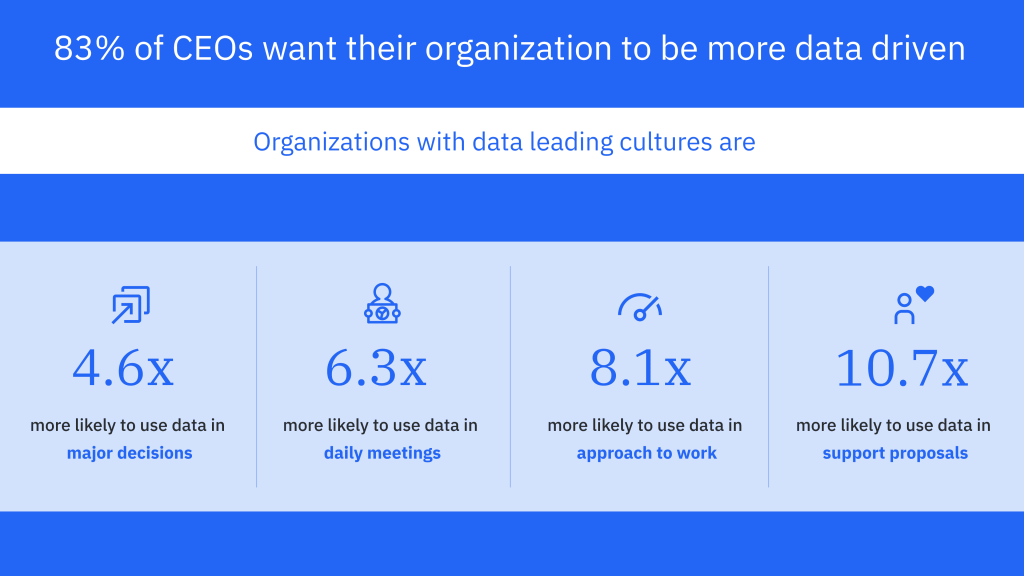
According to McKinsey, data-driven organizations demonstrate an EBITDA increase of between 15% and 25%. A study conducted by Forrester Consulting adds an 8% advantage in improving customer trust, an 81% growth in revenue, and a 173% increase in compliance with regulations. What business wouldn’t want to be data-driven with these and the many other benefits proven by the figures? However, data-driven organizations are few and far between, but we are going to explore how to become one by building a solid data culture and switching to an effective data architecture.
What Type Are You? Data Architecture as a Reflection of Organizational Culture
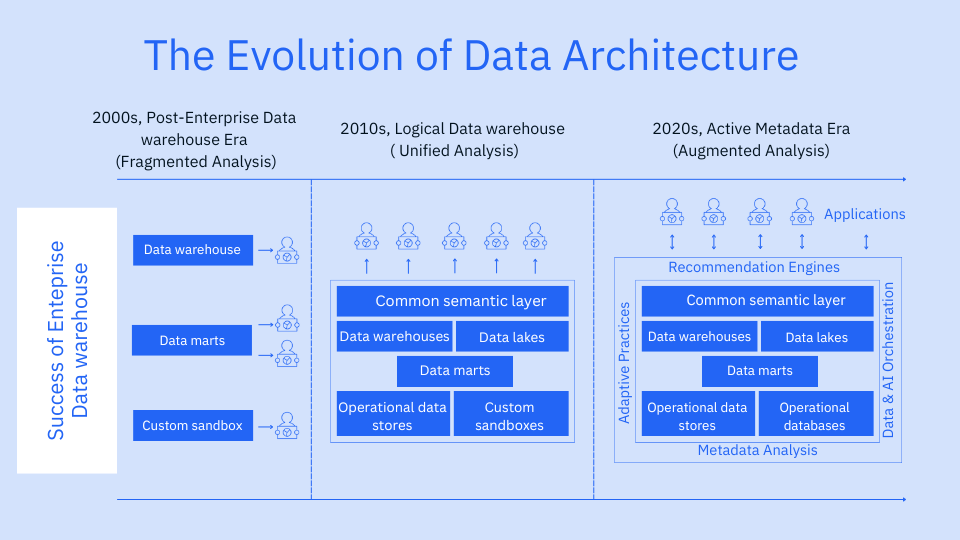
Despite the abundance of articles written about the need for a cultural shift to data-driven business, the percentage of executives stating they managed to establish a strong data culture amounts to only 42.6%, even among leading companies. On the other hand, some business leaders do think that by giving the thumbs up to an AI pilot project, they have succeeded in overcoming the cultural roadblock.
Yet, shaping a data-driven organizational culture is a bit more complicated and requires combining data talent, technology, processes, policies, and data lifecycle management. In fact, data architectures used by companies reflect their actual data culture, which might be far from perfect. Let’s see how different organizational cultures correlate with the way company data is managed and utilised.
Centralised vs. Decentralised
Centralised decision-making frequently translates into strictly controlled, standardised data systems. All company data is stored in a central location and managed by dedicated teams of IT professionals and business analysts who exercise control over access to the information. A decentralised approach empowers employees to act independently, which calls for more autonomous data access and management, with a collection of databases run by different departments yet combined into a loosely coupled information system for easier data sharing.
Top-Down vs. Bottom-Up
Taking a top-down approach to organizational culture means that decisions and initiatives are mostly generated by senior managers and then communicated to teams. This management style is mimicked when a central IT department designs a data architecture with little to no business user involvement. A bottom-up approach engages business units in the design process from the get-go to deliver data architectures tailored to end users.
Siloed vs. Collaborative
Organizational silos separate employees into individual groups, with communication and collaboration mainly locked within the teams. This isolation is often reflected in data architectures that lack integration, end-to-end visibility, and consistent data definitions, thus hampering data governance and information exchange. Conversely, a collaborative organizational culture fosters data integration, establishes consistency in data usage and interpretation, and ensures data accessibility across departments.
Secretive vs. Transparent
A culture of secrecy is commonly associated with restricted access to data and dispersed data stores that are kept isolated for better protection. Organizations with a transparent culture are more focused on the ease of data sharing, and they often promote data democratisation, which enables non-technical stakeholders to access and use data without requiring support from IT professionals.
Conservative vs. Innovative
More conservative organizations are likely to stick to monolithic architectures and legacy systems, prioritising stability and risk avoidance over innovation. In contrast, innovative companies don’t hesitate to adopt modern approaches and emerging technologies, such as cloud computing, microservice architectures, and agile development practices, to faster adapt to changes and gain a competitive advantage.
Risk-Taking vs. Risk-Averse
A risk-taking culture encourages taking calculated risks to achieve the company’s long-term goals, drive innovation, and boost growth. It may endorse novel data architectures like data lakehouses and support prototyping in sandbox environments where new ideas can be tested without impacting core systems. Risk-averse organizations are less prone to experiments with data architectures and may have strict protocols and safeguards that hinder changes.
Customer-Oriented vs. Internally Focused
Externally focused organizations put the customer at the centre of all their efforts, including data management. They harness real-time data, omnichannel strategies, and customer data platforms to turn insights on user behaviour into enhanced customer experience. On the other hand, internal focus means operational efficiency and internal reporting prioritisation when organizing the company data.
Ethical vs. Compliance-Driven
An ethical approach to data management requires strong data privacy and security measures, clear accountability for data usage, fairness and non-discrimination embedded in data practices, and respect for personal user information implemented through informed consent and data transparency policies. Although some of these requirements are included in various regulations, companies seeking only compliance may not go the extra mile to foster data ethics across their people and data systems.
Visionary vs. Operational
Visionary thinking treats data as a strategic asset, often leading to the adoption of breakthrough data solutions like AI-driven data platforms, predictive models, and real-time decision-making. Operational thinking is less strategic and focuses mainly on consistency and efficiency, which translates into implementing data management systems that are cost-effective rather than ground-breaking.
Agile vs. Rigid
Organizations with an eye for agility give preference to microservice architectures, flexible data models, on-demand scaling, and other solutions suited for rapid changes. Culturally rigid organizations are reluctant to embrace innovation and prefer to adhere to tried-and-true monolithic architectures, although they are less adaptable to new business scenarios.
To summarise, sticking to traditional architectures with little effort to democratise the data for hassle-free consumption by end users doesn’t correspond to a strong data culture. Now, let’s figure out how to transform a company into a truly data-driven organization.
5 Steps to Becoming a Data-Driven Organization
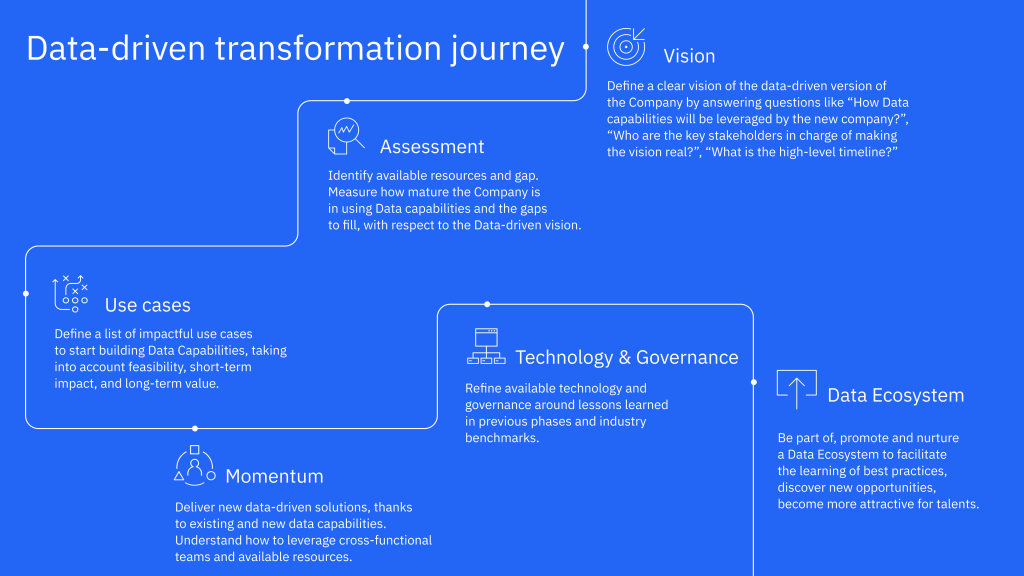
Businesses that use data intelligently remove the guesswork from their decision-making at all levels. They replace assumptions with data insights sourced through sophisticated business intelligence solutions and utilise them not only for strategic decisions but also for everyday actions. They go beyond traditional BI and embrace advanced analytics like data mining, predictive models, and prescriptive tools to identify trends, forecast demand, and choose the best course of action. A data-driven organization acts faster than its competitors because it leverages real-time information and boasts more loyal customers because it delivers enhanced, personalised experiences.
Take, for example, Netflix’s recommendation system. The service gathers users’ data on search requests, rates, and viewing history and then deploys machine learning algorithms to generate prompts, which are 80% right on the money. Starbucks and Coca-Cola are other famous examples, with the first revealing optimal store locations using demographics and traffic patterns and the second creating relevant marketing content for different audiences based on data obtained from various sources.
If you want to move beyond simple data collection, here is a brief action plan:
- Educate all stakeholders, from C-suite to front-line teams. You cannot propagate a data-driven culture when decision-makers and end users cannot tell the difference between analytics and reporting or understand why data quality is important.
- Engage business users in data-driven approaches. Start by showing business value extracted from data to a respected executive who will be leading your company’s data initiatives. Then, broaden the audience by supporting democratised access to data and encouraging its usage across the whole organization.
- Remove data blockers. Redesign the current data architecture to integrate your disparate data and allow for a seamless flow of information into end-user hands.
- Facilitate data understanding. By making information easy to visualise through user-friendly dashboards with charts and graphs, you will let business stakeholders grasp the meaning behind the data in seconds without developing advanced data skills.
- Establish clear KPIs. Measuring actual performance against established objectives helps a data-driven organization verify that its data strategies work as intended, spot areas for improvement, and allocate resources effectively.
Although it’s only a starter plan, those five steps can drastically change the way organizations handle their data.
How to Efficiently Plan Data Projects as a Data-Driven Organization
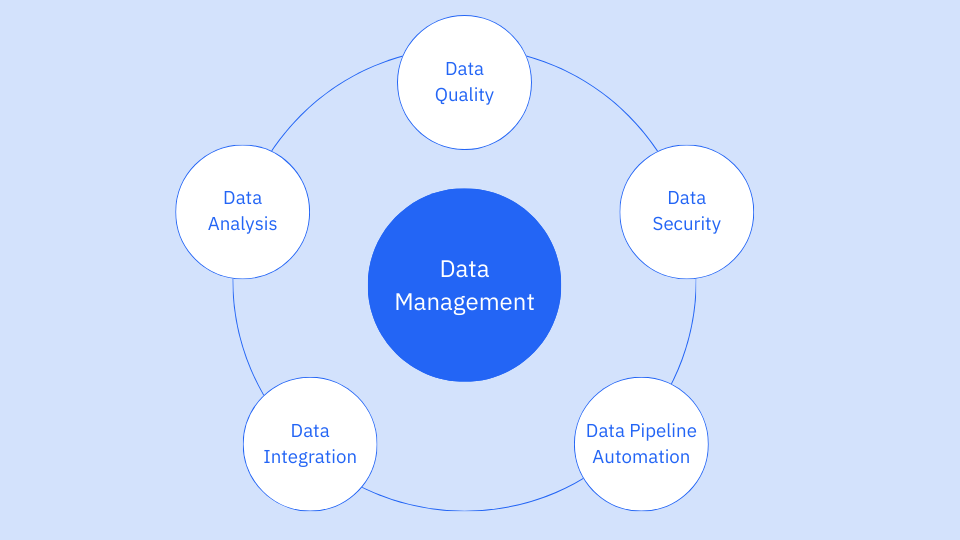
Certainly, deciding to become a data-driven organization and rethinking the current data culture are only the first steps on the road to increased innovation and business performance. You need to transform your existing infrastructure to leverage the latest technical capabilities and cutting-edge analytics tools to drive data-driven decision-making. Launching a new data project for business intelligence purposes can be a challenge, with some common problems described in our articles. At IBA Group, we use best practices and survey our clients to keep the transformation process streamlined and cost-effective. Here are our tips on project implementation when becoming a data-driven organization.
Discovery
It all starts with auditing the existing data infrastructure to understand its current state, which usually includes the following steps:
- Stakeholder Identification. Identify all relevant stakeholders, such as business units, end users, IT teams, and external partners. Get a grasp on their roles, perspectives, and impact on the project.
- Current State Analysis. Review the documentation and gather data on current business processes, systems, and technologies. Gain insight into organizational goals based on interviews, surveys, or workshops. Document the existing IT architecture, data structure and sources, management processes, and integration points. Locate pain points, inefficiencies, and areas for improvement, prioritising business-critical processes.
- Defining Requirements. Detail functional and non-functional requirements for the data management solution, including requirements for data quality, governance, security, integration, and user interfaces.
- Options Assessment. Determine potential solutions and evaluate their feasibility, taking into account technical, financial, and operational aspects.
- Specifying Future State. Define the desired future state of the enterprise architecture in compliance with the business objectives, including scalability, flexibility, and integration requirements.
- Implementation Planning. Create a high-level roadmap for the implementation of the data management solution, covering key scope, milestones, deliverables, and timelines.
IMPORTANT NOTE
- Although the discovery phase may take longer for organizations with complex processes and data structures, rushing through the requirement-gathering step can result in incomplete or unclear requirements.
- Failing to involve all relevant stakeholders can lead to missing critical requirements and resistance to change, undermining data-driven organizational culture.
- Inefficient change management with poor communication and documentation is also likely to end in misunderstandings, misaligned expectations, and missed deadlines.
- Skipping a detailed feasibility and risk analysis may spiral into selecting solutions that are not viable or sustainable in the long term.
Assessment
Within this stage, you need to develop a comprehensive assessment plan outlining the project scope, potential challenges and risks, and a possible solution. The plan should include a roadmap for the project’s implementation. You can use questionnaires and interviews to gather detailed information from key stakeholders, including data scientists and architects, business analysts, and end users. The goal is to identify their needs, requirements, and expectations of the new system.
- Define Objectives. Clarify the goals of the data management solution, including data quality, data governance, data integration, and data analytics capabilities. Ensure the goals align with the organization’s strategic objectives.
- Map Out Data Flows. Explore data sources, data flows, and integration points within the organization to understand how data is collected, stored, processed, and used.
- Identify Data Owners and Data Consumers. Understand their roles, expectations, and pain points.
- Validate with Stakeholders. Introduce the proposed data architecture and implementation plan to stakeholders for feedback and validation.
Data Strategy
At this point, you need to decide on the technology stack that will be used for the new system, including databases, data processing solutions, ETL/ELT technologies, integration platforms, and data analytics tools. You should also develop a detailed migration plan to move data from the old system to the new one. It’s a good time to conduct workshops with the stakeholders and demonstrate the proposed architecture. You will be able to gather feedback and make necessary adjustments before proceeding with the pilot phase.
The elements to include in your data strategy:
- Vision and objectives
- Data governance framework
- Data architecture design
- Data integration plan
- Data quality management
- Data security and privacy policies
- Data analytics and BI capabilities
- Technology stack
- Data lifecycle management
- Skills and training plan
- Implementation roadmap
Support
After the solution goes live, a support team continues to introduce new features and enhancements based on user feedback and evolving business needs. This phase also involves providing ongoing support to ensure the system runs smoothly.
Clearly this is only a general outline of data system development for a data-driven organization, and it can be adapted to different business models, levels of business intelligence maturity, and specific business needs.
Implementation
After the successful pilot project introduction, the development team can proceed with the full-scale data management system implementation, which involves setting up the entire infrastructure, migrating all necessary data, and ensuring the solution is fully operational. The team will check that the system is developed according to the specifications and that it promptly addresses any issues.
Usually, the migration team includes:
- Data architect
- DevOps engineer
- Data engineer
- Business analyst
- Delivery manager
The implementation time depends on:
- Chosen technologies
- Project complexity
- Urgency of the project’s implementation
- Level of engagement and collaboration stemming from the organizational culture
- Cloud platform selected for the data solution development
Pilot
The pilot project should have a fixed scope and be executed by a dedicated development team. The team should focus on the key features and functionalities of the new data architecture that are critical to the project’s success.
The standard tasks performed at the pilot stage include:
- Data analysis with several data sources connected;
- Data mart design covering unstructured data storage and/or data model that can be used to generate one report;
- ETL/ELT processes, limited to basic data quality checks and transformations, with no customisation or complex calculations;
- Defining primary tests;
- Infrastructure set-up;
- Development of project documentation and training materials.
Biggest IT and Data Architecture Trends to Be Embraced by a Data-Driven Organization
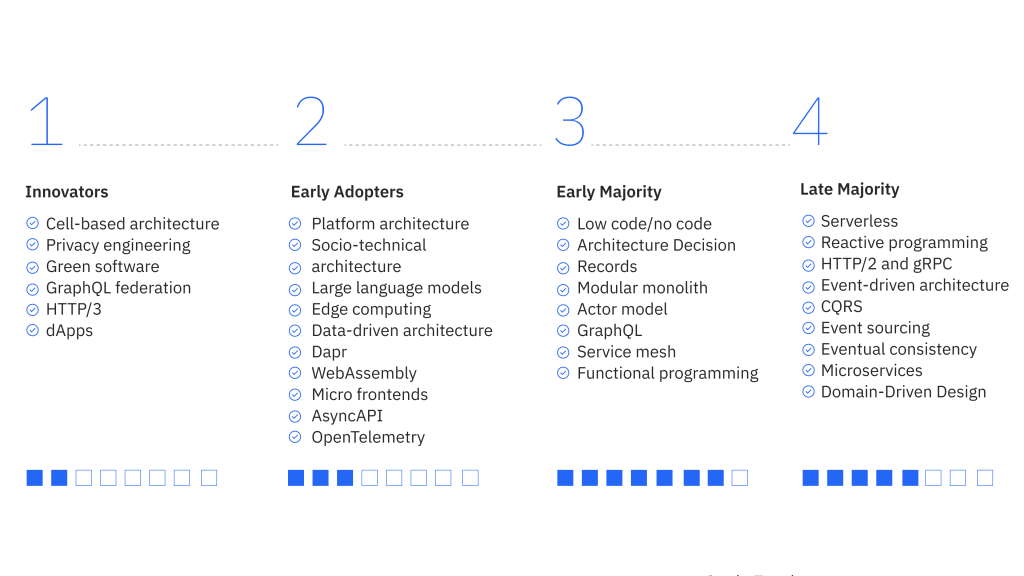
A data-driven organization should keep an eye on new ways of dealing with data. Here are the major IT trends impacting data architectures:
- Data Lakehouses. Combining the best features of data lakes and data warehouses, lakehouse architecture easily copes with both structured and raw data and provides businesses with advanced data analytics for deeper insights, better decision-making, and more accurate predictions.
- Cloud-Native Architectures. The adoption of cloud-native technologies like Kubernetes, serverless computing, and microservices allows companies to arrive at better scalability, flexibility, and cost-efficiency.
- Data Fabric. With the integrated data fabric design, organizations can leverage data regardless of its type, source, format, and quantity to gain valuable insights while reducing maintenance times by 70%, enhancing security, and promoting self-service data consumption.
- Data Mesh. The decentralised data mesh architecture distributes data ownership and management across different organizational domains to ensure better alignment with domain-specific needs and foster data democratisation.
- AI and ML Integration. While embedding AI and ML capabilities into data architectures enables advanced analytics and predictive insights, the intelligent algorithms also serve to resolve data quality issues, automate data processing, facilitate integration, and help with many other data management tasks.
- Data Governance and Compliance. Apart from meeting stiff data privacy and security requirements like GDPR, HIPAA, and CCPA, a data-driven organization will benefit from implementing robust policies and procedures that ensure data quality, promote a strong data culture, and lay the foundation for promising initiatives.
- Data Marketplaces. By integrating data from third-party providers into their ecosystems, businesses can gain access to a broader spectrum of information to generate actionable insights from high-quality data and enhance their decision-making processes.
- Real-Time Analytics and Edge Computing. A growing number of IoT devices, coupled with edge computing, enables real-time data processing for improved response times, faster insights, and better decision-making, provided businesses have their data pipelines optimised for edge environments and large amounts of data.
On its journey to becoming a data-driven organization, your company may need the support of experienced data architects from the IBA Group. Fill out the form with a brief description of your business needs and challenges, and we will gladly share our expertise in building cutting-edge data-driven tools and platforms.
YOU MAY ALSO BE INTERESTED IN
- Databricks vs Snowflake: Is There Really a Winner?
- On the Way to Lakehouse
- Cloud vs On-premises: What is Better for Business?
- Why Migrating to the Cloud Brings Value
- Data Migration to Cloud: What You Will Get in the End
- Why Migrating to the Cloud Brings Value
- ETL/ELT: What They Are, Why They Matter, and When to Use Standalone ETL/ELT Tools
- Data Literacy: The ABCs of Business Intelligence
- BI Tools Comparison: How to Decide Which Business Intelligence Tool is Right for You
- Unsuccessful examples of BI development. Part I
- Examples of Unsuccessful BI Development. Part II
- BI Implementation Plan
- IBA Group Tableau Special Courses
- Integrating Power BI into E-Commerce: How to Succeed in Rapidly Developing Markets
- Analytics vs. Reporting — Is There a Difference?
- Better Business Intelligence: Bringing Data-Driven Insights to Everyone with IBM Cognos Analytics 11